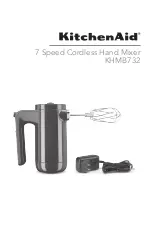
2-12
J-Type CCM
J-Type
Revision J2005-2
Twin Masters
?
Set number of twin masters
Event Duration
?
Set duration of event (i.e. length of pulse required
for control of external equipment)
Revert Mode
?
Set motorized faders to revert to original position
when moved
Revert Time
?
Set the time it takes for a motorized fader to revert
to its original position
Fade Profile
?
Set fade profile to LOG or LIN
0DSSLQJ
Before the console automation can be used, all faders and programmable modules
must be mapped. Each Map is stored in non-volatile memory within the CCM. Map-
ping operations should only need to be performed if the layout of the modules within
the frame have been changed. A new console is always mapped by CADAC before it
leaves the factory.
Each module position in a frame is identified by a unique number (the address). This
number is set by a combination of a small PCB fixed to the frame beneath each mod-
ule and the frame number switch at the back of a frame. As each fader is connected
to a module, it too can be given a unique address.
By themselves these numbers are not particularly “user-friendly”, for example the
first programmable router module may be in frame position 28, but it is preferable to
call it “router 1" not “router 28". The Maps therefore allow the user to give any partic-
ular fader or module an identifying number that is more appropriate than the address
fixed by the hardware. The CCM will then convert between the address and the new
module (or fader) number automatically.
51914
)DGHU
#
0DSSLQJ
Ensure all faders are NOT ISOLATED and NOT MUTED.
Select “Map Faders?” from the system setup menu and press [
↵
].
The display changes to “Wait......”, as the CCM checks for faders in the console.
When the check is complete, the display changes to “Faders: 0". The CCM is now
ready for mapping to begin.
Press the MUTE button of the channel fader that you wish to be
“channel fader 1",
usually the left-most fader in the frame. The MUTE led will illuminate briefly then
extinguish - the CCM display should now read “Faders: 1 “. Now press the MUTE
button of the channel fader you wish to be
“channel fader 2", usually the next one
along - the CCM display should now read “Faders: 2 “. Continue setting each fader
into MUTE until all the channel faders have been mapped.
Continue pressing the Mute buttons for the MASTER faders. The number shown in
the CCM display shows the total number of faders in the console. Note that the DC
MASTER bus controlled by each master fader is set by switches on the fader PCB
and is
not affected by fader mapping.
If you are satisfied that the console faders have been mapped correctly, press [
↵
] to
stop mapping and store the new map, otherwise press [Esc] to cancel this operation.
51915
5RXWHU
#
0DSSLQJ
Ensure all programmable routers are NOT ISOLATED.
■
■
■
■
Select “Map Routers?” from the system menu and press [
↵
].
The display changes to “Routers: 0".
■
■
■
■
Press the RECALL button of the router that you wish to be “router 1".
The RECALL led will illuminate - the CCM display should now read “Routers: 1".
Summary of Contents for J-Type
Page 1: ...Audio Mixing Console 056 6 10 n 95 4 1 07 g8 2...
Page 4: ...iv Table of contents J Type Revision J2005 2...
Page 6: ...vi General Precautions Revision J2005 2 J Type...
Page 8: ...viii Introduction J Type Revision J2005 2...
Page 72: ...3 22 7496 Dual Input Channel J Type Revision J2005 2...
Page 86: ...3 36 7830 Dual input channel J Type Revision J2005 2...
Page 96: ...4 10 7925 Programmable Group Module J Type Revision J2005 2...
Page 102: ...4 16 7972 Programmable Aux Groups Module J Type Revision J2005 2...
Page 110: ...4 24 7548 Programmable Routing Slave Mod Mk II J Type Revision J2005 2...
Page 146: ...6 14 7106 Quad Panning module J Type Revision J2005 2...
Page 154: ...7 8 6910 Oscillator PFL Stereo Aux module J Type Revision J2005 2...
Page 188: ...8 16 7956 DC Master Motor fader J Type Revision J2005 2...
Page 200: ...INDEX 4 J Type Revision J2005 2 W Wiring the switches 1 6 X XLR connections APP I...
















































